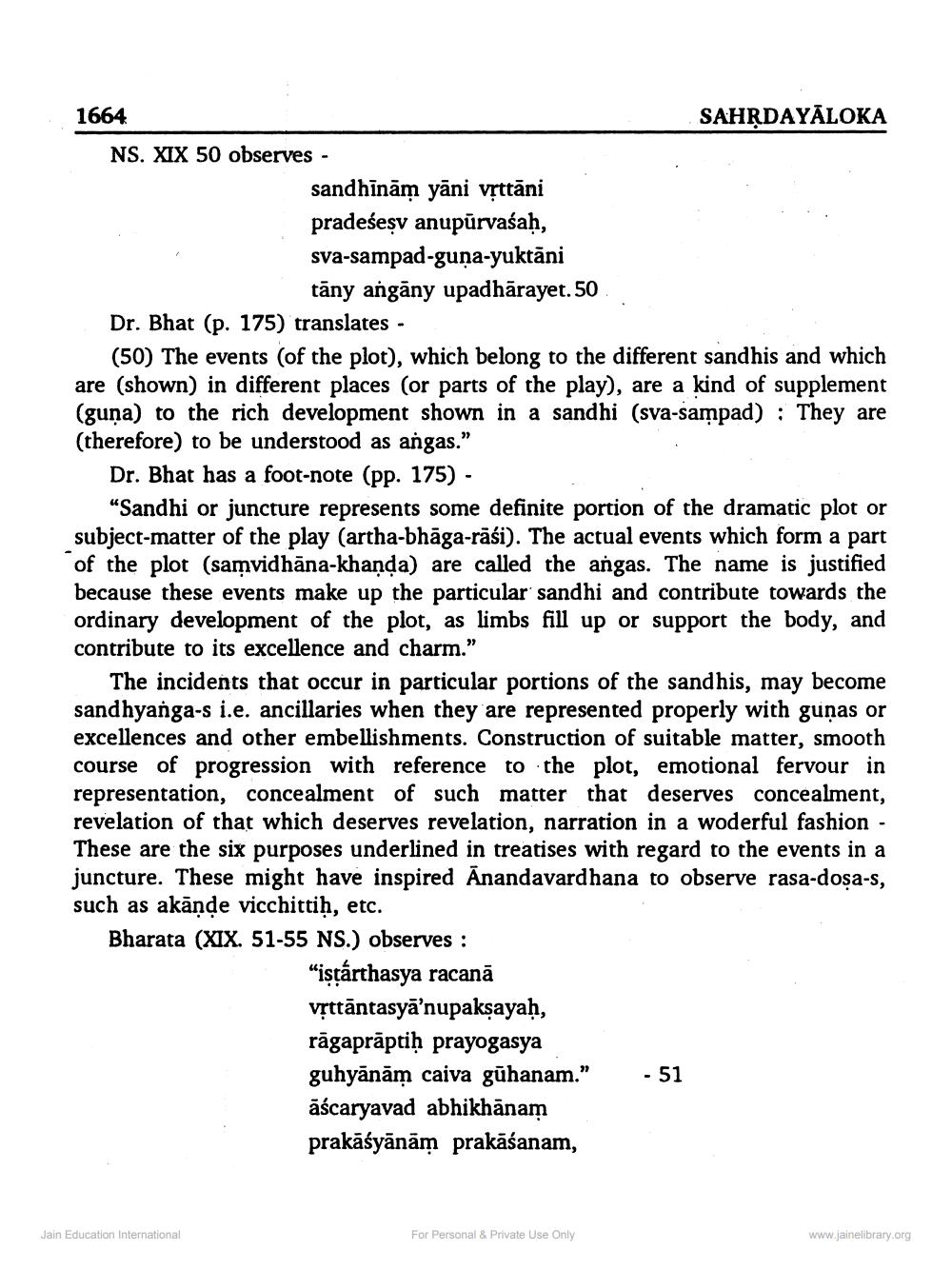________________
1664
SAHRDAYĀLOKA NS. XIX 50 observes -
sandhīnām yāni vsttāni pradeśeșv anupūrvaśaḥ, sva-sampad-guna-yuktāni
tāny angāny upadhārayet. 50 Dr. Bhat (p. 175) translates -
(50) The events (of the plot), which belong to the different sandhis and which are (shown) in different places (or parts of the play), are a kind of supplement (guna) to the rich development shown in a sandhi (sva-sampad) ; They are (therefore) to be understood as angas."
Dr. Bhat has a foot-note (pp. 175) -
"Sandhi or juncture represents some definite portion of the dramatic plot or subject matter of the play (artha-bhāga-rāśi). The actual events which form a part of the plot (samvidhāna-khanda) are called the angas. The name is justified because these events make up the particular sandhi and contribute towards the ordinary development of the plot, as limbs fill up or support the body, and contribute to its excellence and charm."
The incidents that occur in particular portions of the sandhis, may become sandhyanga-s i.e. ancillaries when they are represented properly with gunas or excellences and other embellishments. Construction of suitable matter, smooth course of progression with reference to the plot, emotional fervour in representation, concealment of such matter that deserves concealment, revelation of that which deserves revelation, narration in a woderful fashion - These are the six purposes underlined in treatises with regard to the events in a juncture. These might have inspired Anandavardhana to observe rasa-dosa-s, such as akānde vicchittiḥ, etc. Bharata (XIX. 51-55 NS.) observes :
"işțărthasya racanā vșttāntasyā’nupakşayaḥ, rāgaprāptiḥ prayogasya guhyānām caiva gūhanam." - 51 āścaryavad abhikhānam prakāśyānām prakāśanam,
Jain Education International
For Personal & Private Use Only
www.jainelibrary.org




